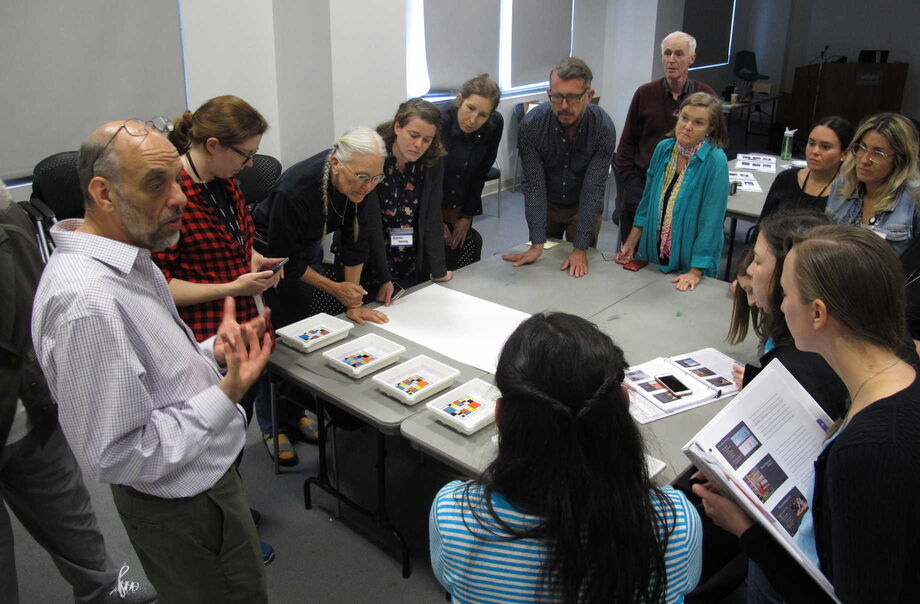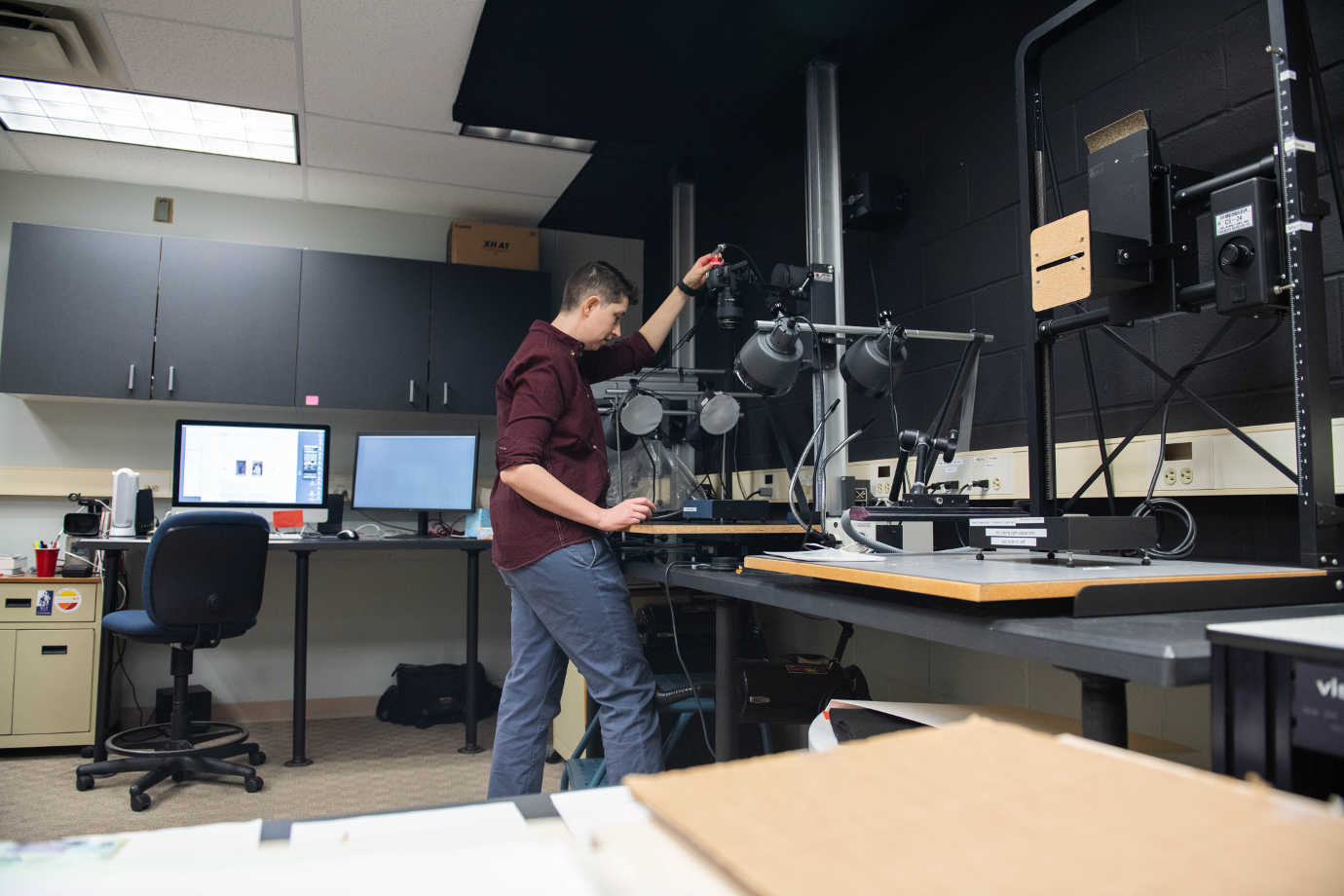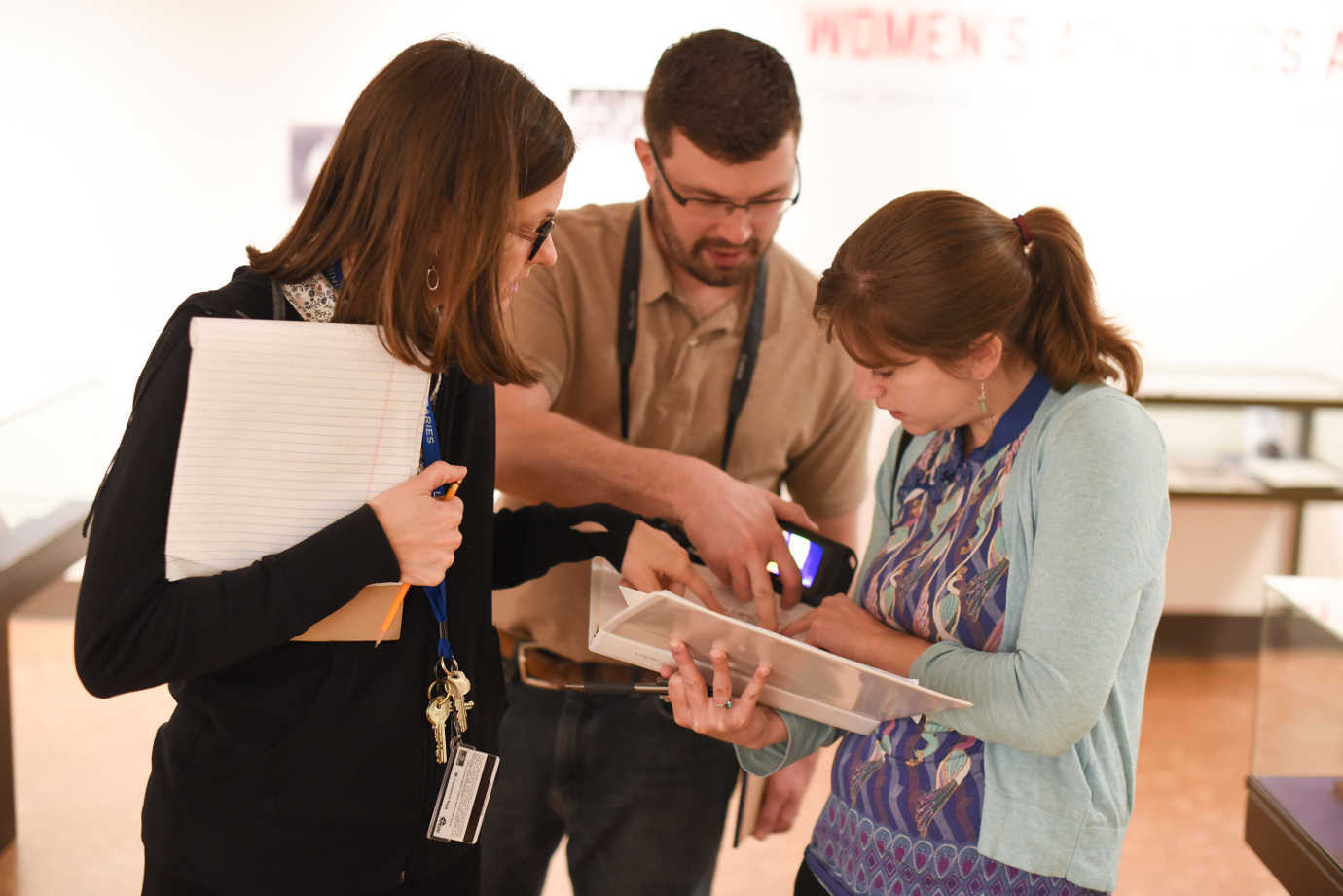
Daniel Burge, senior research scientist, teaches a workshop on digital print preservation. Image courtesy of the Image Permanence Institute.
Since their invention in the nineteenth century, photographs have been unparalleled records, preserving equally events of momentous public importance, our most cherished, private moments, and scenes of everyday life. But film and photographs are also delicate technologies, subject to chemical deterioration over time and damage from humidity, light, pollutants, and other environmental concerns. Since 1985, the National Endowment for the Humanities has helped the Rochester Institute of Technology’s Image Permanence Institute (IPI) inform and support the preservation of our nation’s cultural heritage, with a particular focus on photographic materials and sustainable environmental management in collecting institutions. More than $7 million in NEH funding has supported a range of research and educational programs, ensuring that professional conservators have innovative, proven methods for preserving the historical record.

